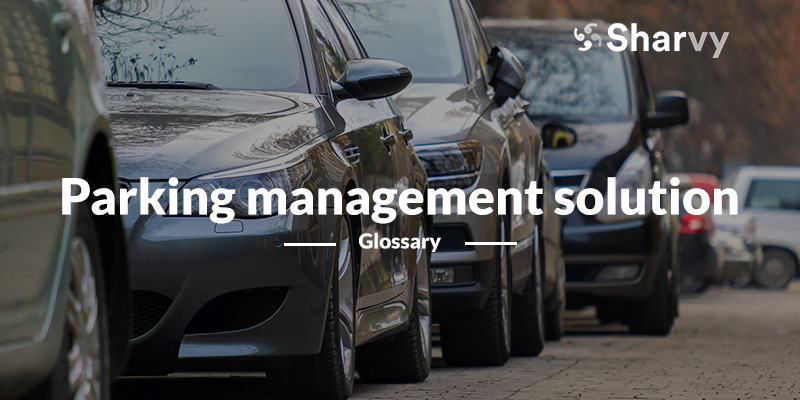What is a parking management solution? – Definition
A parking management solution is an automated system, often in the form of SaaS (software as a service). It is designed to optimize the use of parking spaces in companies of all sizes, from micro-businesses to multinationals.
The system centralizes all parking-related data in a single tool. This reduces errors and improves efficiency. Here are some of the key features of a parking management solution:
- Space reservation: Employees can reserve spaces for various vehicle models (electric, plug-in hybrid, two-wheeler) through a mobile app or web browser.
- Releasing parking spaces: Employees who have a parking space can indicate the days on which they will not be using it (teleworking, vacations, using another mode of transport, etc.). These freed-up spaces are made available to their colleagues, maximizing the use of parking resources.
- Space allocation: The system automatically allocates available spaces in a fair and efficient way, ensuring smooth and fair management of available space.
- Access control: This technological integration guarantees secure control of parking lot entrances and exits.
- Statistics: Data analysis provides accurate, up-to-date occupancy information in real time, enabling more responsive and sustainable management of parking spaces.
A parking management system offers several advantages. Firstly, it optimizes space utilization by sharing parking spaces among all employees, thus improving their quality of life at work. What’s more, by optimizing parking lot occupancy, the number of spaces can be reduced. This reduces parking-related operating costs, as does the automation of parking management. Last but not least, it enhances security thanks to efficient access control where only vehicles with a reservation can enter. The result is greater protection for both vehicles and users.
Is a parking management solution suitable for all companies?
Absolutely! All companies, regardless of size or sector, can benefit from a parking management solution. With their flexibility and adaptability, these solutions effectively meet the varied needs of every organization.
For small businesses, this solution transforms the use of available space. It improves the experience for customers and employees by reducing conflicts and the time it takes to find parking.
Medium-sized businesses benefit even more from these systems. They facilitate the management of large numbers of spaces and coordinate the needs of employees and visitors. Features such as online reservation and access management are included.
For large companies and multinationals, who often manage multiple sites or campuses, the adoption of a parking management solution is virtually indispensable. It optimizes the use of parking spaces and reduces emissions from vehicles searching for spaces. This contributes to greater operational efficiency and reduced environmental impact.
3 Examples of how to use a parking management solution!
Relocation: When relocating, companies face major parking challenges. This is particularly the case if the new parking lot offers fewer spaces than before. This creates tension and a need to manage available space efficiently. Flex parking, a system in which spaces are not allocated on a fixed basis, but are shared between all employees proves particularly useful in such cases. This model maximizes the use of available spaces. It adapts the allocation of spaces to the real needs of employees, which can vary, particularly with new telecommuting policies. It ensures an equitable and optimized distribution of spaces, while reducing frustrations.
- Multi-site parking management: For companies with multiple sites, unifying parking management through a centralized platform considerably simplifies operations. Connected to an access control system, this type of solution makes it easier to move from one site to another. In just a few clicks, an employee at site A can reserve and access a parking space at site B. There’s no need to ask someone at reception to reserve a place for them, or to change the rights on a badge!
Management of shared charging stations: Since June 1, 2022, regulations have required all new non-residential buildings with more than ten parking spaces to be equipped with at least one charging station and cable trays for one in five spaces (20%). A parking management solution like Sharvy makes this transition more fluid. It enables employees to easily reserve parking spaces equipped with charging stations, in advance of their arrival. This not only simplifies charge management for the company, but also optimizes the use of charging stations. This avoids conflicts and ensures maximum availability. In this way, it makes an effective contribution to sustainable mobility and to improving corporate CSR policies.

